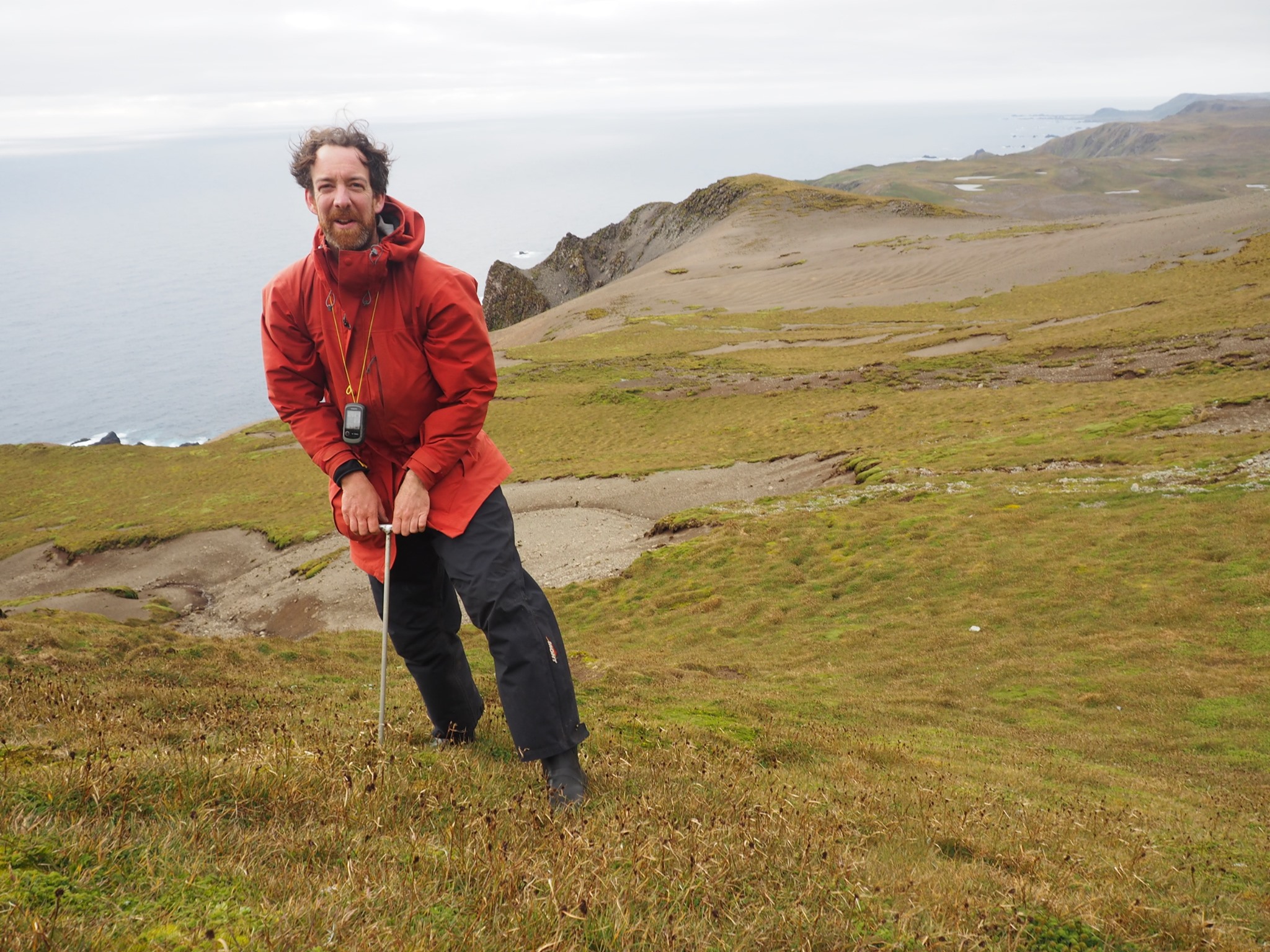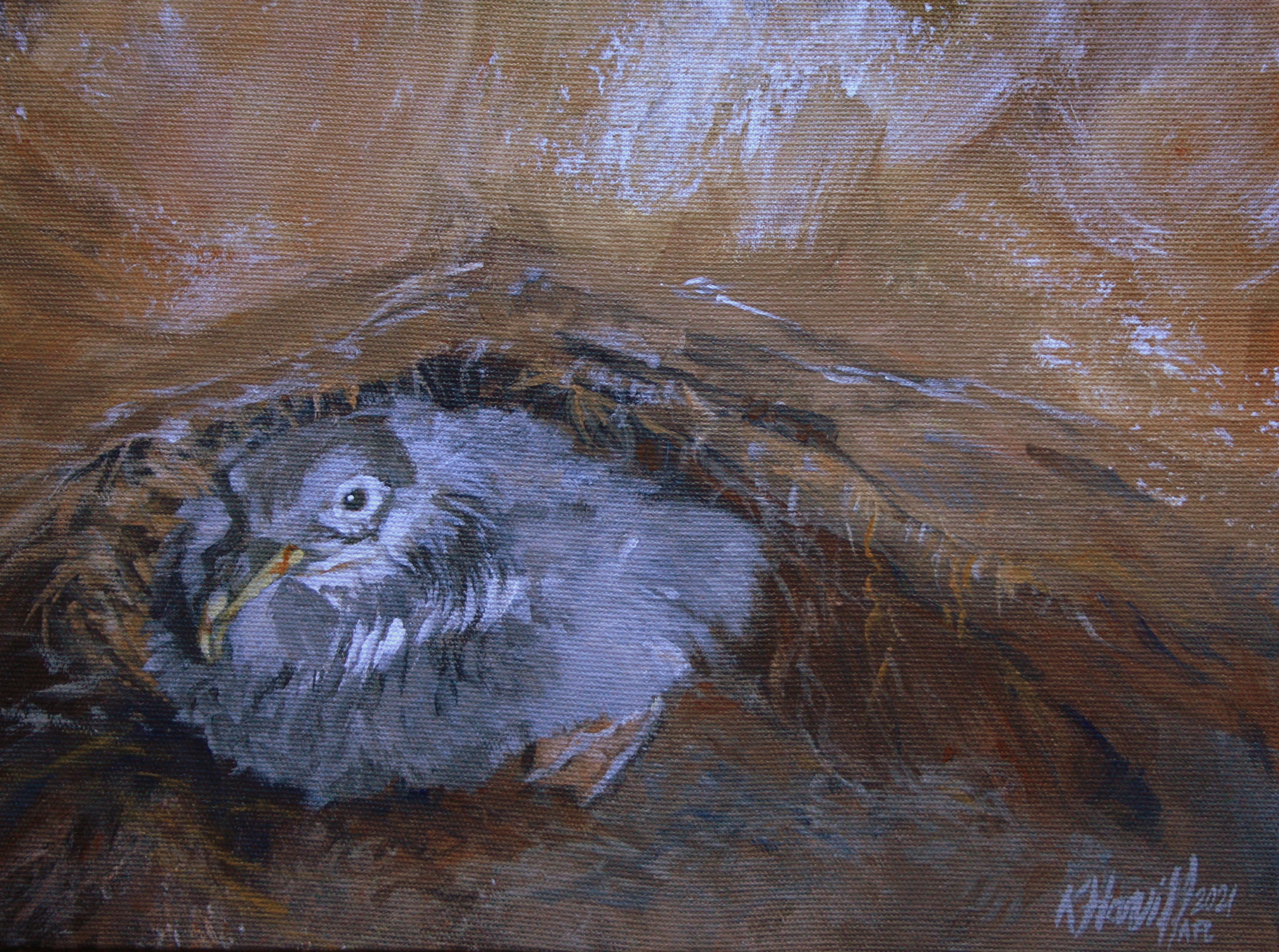
Jeremy Bird on Macquarie, photograph by Andrea Turbott
Jeremy ‘Jez’ Bird has been awarded his PhD by the University of Queensland for a study of burrowing petrels, including the ACAP-listed and globally Near Threatened Grey Petrel Procellaria cinerea, on Australia’s Macquarie Island.

A Grey Petrel chick in its burrow on Macquarie Island, photograph by Jeremy Bird
The thesis abstract follows:
“Many seabird populations are of conservation significance, either because they are rare and threatened with extinction, or because they are abundant and play an integral role in island-ocean systems. Procellariiform petrels in the families Procellariidae, Hydrobatidae and Oceanitidae are especially vulnerable to the impacts of alien invasive species on islands and as a result 45 of 97 species globally are threatened with extinction, a higher proportion than comparable bird groups. In their natural state petrels are also the most abundant seabirds, consuming prey volumes commensurate with commercial fisheries, and transferring nutrients from pelagic to terrestrial and coastal ecosystems on a scale equivalent to other global geochemical fluxes. Seabird nutrient inputs ramify to influence whole-island food-webs. To prevent seabird extinctions, and to restore nutrient pathways the whole-island eradication of invasive species has been developed as an effective conservation tool. In this thesis I explore the conservation ecology of a diverse group of petrels following the World’s largest multi-species eradication to date—the staged removals of Wekas Gallirallus australis, Feral Cats Felis catus, European Rabbits Oryctolagus cuniculus, Black Rats Rattus rattus and House Mice Mus musculus from subantarctic Macquarie Island.
Petrels are particularly challenging to study, and few quantitative data on their responses to invasive species eradication are available. Petrels nest discontinuously across rugged terrain on remote islands. Their nests are in under-ground burrows, the entrances to which are often obscured under dense vegetation. Birds are not present year-round, and only return to or leave from colonies at night. Given these inherent challenges, I review in Chapter 1 what motivates people to collect and report population estimates for petrels. Because these species are cryptic and challenging to study I undertook a meta-analysis of uncertainty in published estimates to assess overall levels and drivers of uncertainty. I concluded that the primary motivation for estimating populations is to inform species status and trend assessments, but uncertainty in generated estimates is an impediment to reliable trend detection.
The findings of the review provide the rationale for testing field methods that measure two key metrics that underpin population estimates: the proportion of burrows occupied by breeding pairs (Chapter 2), and the total number of burrows on an island (Chapter 3). Chapter 2 compares traditional techniques for estimating burrow occupancy and breeding status with my novel application of camera traps positioned at burrow entrances. I found that (i) camera traps are effective at collecting season-long activity patterns, with evidence that these can be used to distinguish breeding from non-breeding burrows, and (ii) cameras provide higher resolution data on breeding success than repeat visits to inspect burrows manually and are a low impact approach.
To understand the current size and distributions of a diverse assemblage of petrels that includes common widespread species (Antarctic Prion Pachyptila desolata) and rare localised species (Blue Petrel Halobaena caerulea and Grey Petrel Procellaria cinerea) a multi-method approach to surveys and analysis is required (Chapter 3). I found that a model-based analysis of stratified randomised whole-island survey data was most effective for estimating Antarctic Prions, less effective for scarcer White-headed Petrels Pterodroma lessonii, but did not yield useful data for Blue or Grey Petrels, which required a targeted approach.
In the final chapters I evaluate the outcomes that invasive species management has achieved for petrels to date (Chapter 4) and projected into the future (Chapter 5). The current distribution of petrels on Macquarie Island reflects the legacy of invasive species impacts and the removal of this threat. The two established species, Antarctic Prion and White-headed Petrel are confined largely to refugial habitat, while the recolonising species Blue and Grey Petrel are occupying optimal habitat on the island’s coastal slopes. While all four species occur in superficially similar habitats in terms of vegetation type, their realized niches defined by other environmental variables including slope, elevation, and aspect are starkly different. Each species is now increasing, but the two recolonising species are increasing much more rapidly than the two established ones, at rates suggesting immigration is an important mechanism facilitating initial population recovery.
The eradication of invasive predators from Macquarie Island has achieved a major short-term goal: to prevent further seabird extinctions and facilitate threatened species recovery. I present a case for downlisting three species from state or federal threatened species lists. However, suitable habitat is currently under-utilised. Using habitat suitability modelling and inter-island inference I illustrate how the current size and distribution of petrel populations is well short of plausible carrying capacities. Full recovery of populations, and restoration of the ecological and societal benefits that they bring is decades away, but no long-term targets for population recovery exist. I present a future scenario based upon plausible model-derived population estimates to highlight the potential advantages of establishing long-term targets. The thesis concludes with my own narrative vision of a future Macquarie Island when the full post-eradication recovery has occurred in coming decades.”
See also a recent publication by Jeremy Bird from his thesis.
With thanks to Jez Bird.
Reference:
Bird, J.P. 2021. The Conservation Ecology of Burrowing Petrels on Macquarie Island. PhD Thesis. Brisbane, Australia: School of Biological Sciences, The University of Queensland. 216 pp.
John Cooper, ACAP Information Officer, 30 August 2021

 English
English  Français
Français  Español
Español 



